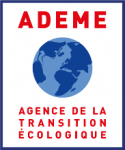Investigation of the potential of MOF-derived Porous Materials
| ABG-133819 | Master internship | 5 months | Nombre de jours ouvrés mensuels x 4,35€ / heu |
| 2025-10-14 |
- Chemistry
- Materials science
Employer organisation
Website :
ICMUB, as the sole unit within the Scientific Area of Bourgogne-Franche-Comté primarily affiliated with "CNRS CHIMIE" institute, is at the heart of the development and promotion of Chemical Sciences in the broadest sense, through its research and training mission. ICMUB's activities revolve around two cross-disciplinary research axes, with metal chemistry, coordination chemistry, and organometallic chemistry as a common thread.
Description
M2 internship, starting from February 2026, for a duration of 5 to 6 month.
Doping of metal oxide systems with an additional metal has been a conclusive approach to improve and expand their performances and the extent of their applications. Recently, a novel approach is being investigated for the synthesis of metal-based systems, metal oxides, and perovskites. Indeed, the synthesis of metal oxide and perovskites by calcination of MOFs (Metal-Organic Frameworks) is gaining interest as a new synthesis pathway leading to porous and stable carbon/metal-based and metal-based systems, with inherited characteristics of the pristine MOF, such as high surface area, composition diversity, and tailored porosity (Fig. 1).[1] MOFs are porous crystalline metal-organic compounds, known for their porosity and organized crystalline structure, and are predominantly used for gas separation and storage, and catalysis. A perovskite resulting from the calcination of a MOF may retain properties from the original MOF and notably its porosity.[2] Additionally, MOFs can contain several metals, which makes it possible to consider the direct synthesis of perovskites from well-designed large specific area MOFs
During this internship, the student will first be acquainted with the synthesis of common MOFs. Then, their work will be to explore the possibility to synthesize multi-metallic MOFs through direct synthesis. Secondly, the obtained MOFs will be derived to ABO3 perovskites through calcination.
References:
[1] J. Zhao, et al., Controlled porous hollow Co3O4 polyhedral nanocages derived from metal-organic frameworks (MOFs) for toluene catalytic oxidation, Molecular Catalysis 2019, 463, 77-86.
[2] A. Shahzad, et al., Harnessing the potential of MOF-derived metal oxide composites to optimize energy efficiency in batteries and supercapacitors, J. Energy Storage 2024, 87, 111447.
Profile
Solid base in coordination chemistry are required. Knowledge related to materials chemistry and their characterization will be appreciated.
The materials obtained through solvothermal synthesis will be studied by several characterization methods including XRD, FT-IR, (BET) N2 adsorption isotherms, TGA-DSC, Elemental Analysis, and ICP. The student will be expected to be thorough and attentive, as the synthesis of MOFs is highly dependent on the synthesis conditions.
Starting date
Vous avez déjà un compte ?
Nouvel utilisateur ?
Get ABG’s monthly newsletters including news, job offers, grants & fellowships and a selection of relevant events…
Discover our members
 ADEME
ADEME  CASDEN
CASDEN  PhDOOC
PhDOOC  ONERA - The French Aerospace Lab
ONERA - The French Aerospace Lab  SUEZ
SUEZ  Généthon
Généthon  Nokia Bell Labs France
Nokia Bell Labs France  Laboratoire National de Métrologie et d'Essais - LNE
Laboratoire National de Métrologie et d'Essais - LNE  Institut Sup'biotech de Paris
Institut Sup'biotech de Paris  Tecknowmetrix
Tecknowmetrix  MabDesign
MabDesign  Groupe AFNOR - Association française de normalisation
Groupe AFNOR - Association française de normalisation  ANRT
ANRT  Aérocentre, Pôle d'excellence régional
Aérocentre, Pôle d'excellence régional  MabDesign
MabDesign  Ifremer
Ifremer  CESI
CESI  TotalEnergies
TotalEnergies  ASNR - Autorité de sûreté nucléaire et de radioprotection - Siège
ASNR - Autorité de sûreté nucléaire et de radioprotection - Siège
